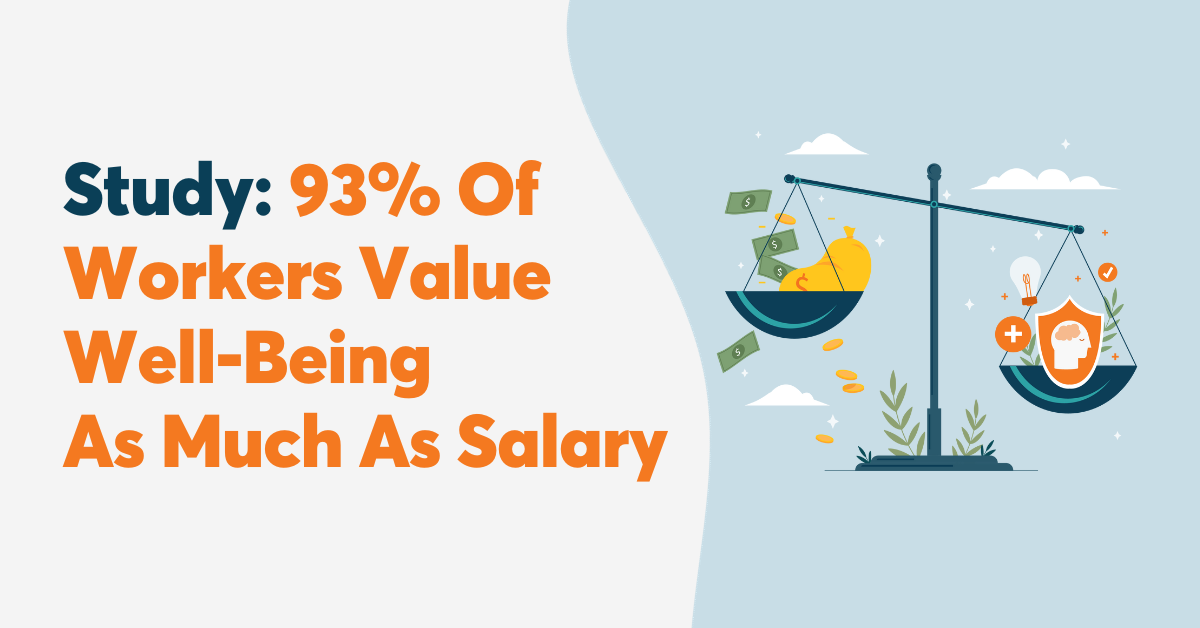Amid global conflicts, rising inflation, and widespread burnout, there’s been a notable shift in employee priorities. Many workers now consider their well-being as valuable as their pay. Gympass’s recent report highlights this growing emphasis on holistic wellness, urging organizations to reconsider what drives job satisfaction and retention.
Pressed for time? Here’s a quick summary…
- Employee well-being: 93% of workers view well-being as vital as salary. There are disparities in workplace well-being, with more men and leaders able to manage their well-being at work than their counterparts.
- Work environment preference: Higher well-being is reported by employees in their preferred work setting—office, remote, or hybrid—underscoring the need for flexible work arrangements.
- Business benefits: Focusing on employee well-being boosts talent attraction, retention, and productivity. Emotional and physical health significantly impact work output.
- Holistic strategies: Addressing diverse employee needs involves conducting surveys, implementing holistic wellness programs that address multiple aspects of well-being, and customizing work arrangements to individual preferences.
Workplace Well-Being: More Than A Paycheck
Today’s employees want more than a paycheck; they seek jobs that support their overall well-being.
Ninety-three percent of workers value their well-being as much as their salary, showing that recent challenges—like the pandemic and economic uncertainties—have made wellness key for employee retention and job satisfaction.
Disparities In Employee Well-Being
Workplace well-being varies among employee demographics:
- 77% of men feel they can prioritize wellness at work, compared to 69% of women.
- 91% of leaders can manage their well-being during the workday, compared to 76% of managers and 66% of non-managers.
Role Of Workplace Environment In Well-Being
The choice between hybrid, in-person, or fully remote work isn’t just a logistical decision; it significantly affects employee well-being.
What’s the best option? The study reveals a simple answer: the best work setting is the one that employees prefer.
There’s a well-being gap between those who work in their preferred environment and those who don’t:
- Only 65% of employees working in their non-preferred work environment report being able to manage their well-being. They’re twice as likely to report that they’re “struggling” or “really struggling”.

- 77% of employees in their preferred work environment can maintain their well-being. They also report:
- Healthier workplace relationships
- Lower stress levels
- Better emotional well-being
- Fewer sleep issues due to work stress
- Higher satisfaction with workplace diversity, equity, and inclusion programs
Given the widespread push to return-to-office, these findings stress the need for location flexibility to support worker wellness.
Business Impact Of Employee Well-Being

Prioritizing employee well-being affects all aspects of business, from attracting top talent to ensuring a productive and committed workforce:
- Talent acquisition: Companies that value well-being stand out to job seekers, who now place a high priority on overall health.
- Productivity drivers: Employee wellness directly influences productivity.
- 95% of employees link emotional wellness to their work output.
- 93% say physical well-being affects their productivity.
- 93% believe engaging work enhances productivity.
- Retention risks: 87% of employees would consider leaving a company where their well-being is neglected.
Holistic Approach To Workplace Well-Being

Addressing workforce well-being is essential to meet evolving employee expectations and create a healthy, productive workplace. Organizations can take the following steps:
- Identify unique needs: Well-being solutions aren’t one-size-fits-all. Needs can vary widely based on factors like demographics, job roles, and personal circumstances. Use surveys to identify unique preferences within employee groups.
- Implement a wellness program: Holistic wellness programs, like Wellable’s, cater to multiple aspects of well-being. Such programs address varied needs, from maintaining physical health to improving emotional well-being, promoting a culture of health that aligns with the modern workforce.
- Tailor work arrangements: Addressing the ‘mismatch problem’—where actual work environments don’t match employee desires—can boost well-being. Tailor work locations to individual preferences to increase job satisfaction.










